AECT Standard 2
AECT Standard 2 (Content Pedagogy): Candidates develop as reflective practitioners able to demonstrate effective implementation of educational technologies and processes based on contemporary content and pedagogy.
Read below to explore my artifacts.


Artifact 1: “States of Matter” e-learning module
Treatment and Planning Report
Context & Conditions
This planning and treatment document was a requirement for EDET 703 Design and Development Tools II, which was completed during my second semester of the M.Ed. Learning Design and Technologies program. This document encompasses the design documentation for the e-learning module “States of Matter”. The planning and treatment document includes an instructional strategy plan (explanation of components and rationale for model), a treatment report, a style guide, a site map, a storyboard, and wireframes for the product.
Due to this artifact being completed in the second semester of the program, this was one of my early attempts at creating a design documentation for an e-learning module product. The instructional strategy chosen for the e-learning module was Gagne’s Nine Events of Instruction mode. Gagne’s nine events include: gain attention, inform learners of objectives, stimulate recall of prior learning, present stimulus, provide learner guidance, elicit performance, provide feedback, assess performance, and enhance retention/transfer (Miner et al., 2016). The instructional strategy chosen was supported by a rationale, which stated that this model allows all class sizes to learn instructional content at their own pace.
The instructional strategy was used to create the lesson structure. For the area of gain attention, the designer includes a YouTube video to introduce the topic and engage learners. For the area of inform learners of objectives, the designer presented the objective to the students to inform them of what knowledge would be gained. For the area of stimulate recall of prior learning, the designer asked students to think about what solids might be in the room. For the area of present stimulus, the designer presented new content about the lesson topic. For the area of provide learner guidance, the designer gave examples and images of the content. For the area of elicit performance, the designer provided knowledge checks throughout the module. For the area of provide feedback, the designer included specific feedback for the learner once the knowledge checks were answered. For the area of assess performance, the designer included an end of module assessment. Finally, for the area of enhance retention and transfer, the designer included addition information and videos for further learning.
The treatment report includes a description of the platform and an overview of the module content. In addition, it includes information regarding how the learner should be interacting with the module. The style guide includes colors and fonts the module should be developed with. The site map includes a layout of the pages and navigation of the module. The storyboard includes the layout of the content of the module and the chunking of material. The wireframes show how the information and images should be presented.

Scope
The purpose of this planning and treatment document was to gain experience designing an e-learning module using a structured instructional design model. This product was developed for any third-grade teacher searching for a new and engaging way to instruct third-grade students on states of matter. This product does not cover an entire instructional unit but would be considered a lesson within a larger science unit.
Role
The write up of this design documentation document was not an individual project. I worked alongside my partner, where we shared equal effort in the design, and planning stages of this artifact.
Instructional Design
This artifact relates to the instructional strategies and content sequencing stages of the Morrison, Ross and Kemp’s Model for Instructional Design (MRK). During the instructional strategy stage, the designer curates creative and/or innovative ways to present the material to students. During the content sequencing stage, the designer orders the information presented in a logical sequence to ensure the student grasps information with prior exposure needed (Morrison et al., 2018). The planning and treatment document created would take place during the design phase of the ADDIE Instructional Design Model (ADDIE). During this stage one of the designers focuses is the instructional strategies that will take place to support the content and ensure learner success (Peterson, 2003).
Related Performance Indicator
AECT Standard 2 (Content Pedagogy): Candidates develop as reflective practitioners able to demonstrate effective implementation of educational technologies and processes based on contemporary content and pedagogy.
Indicators:
-Creating – Candidates apply content pedagogy to create appropriate applications of processes and technologies to improve learning and performance outcomes.
-Using – Candidates implement appropriate educational technologies and processes based on appropriate content pedagogy.
-Assessing/Evaluating – Candidates demonstrate an inquiry process that assesses the adequacy of learning and evaluates the instruction and implementation of educational technologies and processes grounded in reflective practice.
-Managing – Candidates manage appropriate technological processes and resources to provide supportive learning communities, create flexible and diverse learning environments, and develop and demonstrate appropriate content pedagogy.
-Ethics – Candidates design and select media, technology, and processes that emphasize the diversity of our society as a multicultural community.
Reflection
During this project I learned the basic steps for designing/planning e-learning module content, utilizing instructional strategy models, and how to create a style guide/site map/storyboard/wireframe. This project was completed when I was first learning not only how to create these deliverables but what purpose they served. When reviewing the design documentation there are several aspects, I find to still be appropriate along with some aspects I would do differently.
The style guide, instructional strategy, objectives, and content chosen was appropriate and suits the module well. However, the actual write up is lackluster and is in need of further explanation and more detail. The rationale written does not fully support the reasons for choosing the instructional strategy. It is vague and the reasons given do not specifically support the decisions being made. The treatment report could have further explained how the module should be implemented by giving specific environment and unit information.
Throughout the M.Ed. Learning Design and Technologies program, I have learned the importance of providing in depth explanations and information within design documentation reports. The amount of detail provided impacts the quality of the module in its development stage. This design documentation report was a solid beginning but if created now would be changed to improve the final report.

Artifact 2: “Smith and Ragan” e-learning module
Instructional Strategies and Treatment Report
Context & Conditions
The instructional strategy plan and treatment report for the e-learning module “Smith and Ragan” was a requirement of EDET 793 Advanced Instructional Design and Development which was completed during my fifth semester in the M.Ed. Learning Design and Technologies Program. The instructional strategy plan and treatment report are two sections included within a larger design documentation report. This report includes a goal analysis, learner analysis, contextual analysis, task analysis, performance-based objectives, assessment items, an instructional strategy plan, a treatment report, and a formative evaluation.
The instructional strategy plan includes a description of the sequencing content, a description of the pre-instructional strategy, the instructional strategies, and an instructional strategies design matrix. The sequencing content follows Posner and Strike’s (1976) Learning Related Sequencing Scheme. This was chosen due to the five learning concepts, identifiable prerequisite, familiarity, difficulty, interest, and development. The pre-instructional strategy chosen for this plan was an introduction. The introduction consists of two parts: an overview of the material that will be presented and background information regarding the instructional design module. The instructional strategies section of this document includes the modules goals, objectives, and practice questions to prepare the learner for the assessment items throughout the module.
The treatment report includes a description of the product and a description of the interface. The description of the product includes an overview of the design of the product as well as specific notes for the developer. The description of the interface includes which platform/software should be used to develop this module. In addition, it includes information regarding navigation and accessibility.

Scope
The purpose of the instructional strategy plan and treatment report artifact was to demonstrate knowledge and abilities as an instructional designer in the area of designing and planning an e-learning module independently.
Role
This instructional strategy plan and treatment report was completed as an individual project. I acted as the sole designer of the content as well as the sole developer of the e-learning product. Throughout the creation of this document, my knowledge of instructional design processes and e-learning module development best practices are apparent and ensured a well thought out design documentation report.
Instructional Design
This artifact relates to the instructional objectives, instructional strategies and content sequencing stages of the Morrison, Ross and Kemp’s Model for Instructional Design (MRK). During the instructional objectives stage, the designer determines what the learner must master through designing the module objectives. During the instructional strategy stage, the designer curates creative and/or innovative ways to present the material to students. During the content sequencing stage, the designer orders the information presented in a logical sequence to ensure the student grasps information with prior exposure needed (Morrison et al., 2018). The planning and treatment document created would take place during the design phase of the ADDIE Instructional Design Model (ADDIE). During this stage one of the designers focuses is the instructional strategies that will take place to support the content and ensure learner success (Peterson, 2003).
Related Performance Indicator
AECT Standard 2 (Content Pedagogy): Candidates develop as reflective practitioners able to demonstrate effective implementation of educational technologies and processes based on contemporary content and pedagogy.
Indicators:
-Creating – Candidates apply content pedagogy to create appropriate applications of processes and technologies to improve learning and performance outcomes.
-Using – Candidates implement appropriate educational technologies and processes based on appropriate content pedagogy.
-Assessing/Evaluating – Candidates demonstrate an inquiry process that assesses the adequacy of learning and evaluates the instruction and implementation of educational technologies and processes grounded in reflective practice.
-Managing – Candidates manage appropriate technological processes and resources to provide supportive learning communities, create flexible and diverse learning environments, and develop and demonstrate appropriate content pedagogy.
-Ethics – Candidates design and select media, technology, and processes that emphasize the diversity of our society as a multicultural community.
Reflection
During the creation of the instructional strategy plan and treatment report I practiced independently designing all components of an instructional strategy plan and treatment report for the purposes of building an e-learning module. In addition, I gained practice in ensuring appropriate and proper alignment between various components of a design documentation report.
When reviewing the instructional strategy plan and treatment report, I continue to find the decisions made to be appropriate for the learning content and objectives of the module. All information provided is appropriately supported throughout the document. In addition, the treatment report provides essential information. As stated in my e-learning module reflection due to the constraints and limitations of the Adobe Captivate platform, if this module were to be designed again, I would choose a different platform to ensure proper development of the design documentation report. A platform similar to Articulate Rise would have created a more impactful module, which would be reflected within an updated treatment report. A change I would make to the instructional strategy plan is how the instructional strategies information is formatted. In my current document, the goals, objectives, initial presentation, generative presentation, learner practice, and practice questions are presented as multiple sub-headings. Instead, a cleaner and more organized presentation would have been to choose a table with proper column and row headings that allow for the material to be viewed more easily.
Throughout the M.Ed. Learning Design and Technologies program, I have learned how important an organized and well formatted document is. Design documentation reports tend to be large documents with a mass amount of information. Ensuring an organized report allows for developers and stakeholders to view and access the information without hurdles or challenges.